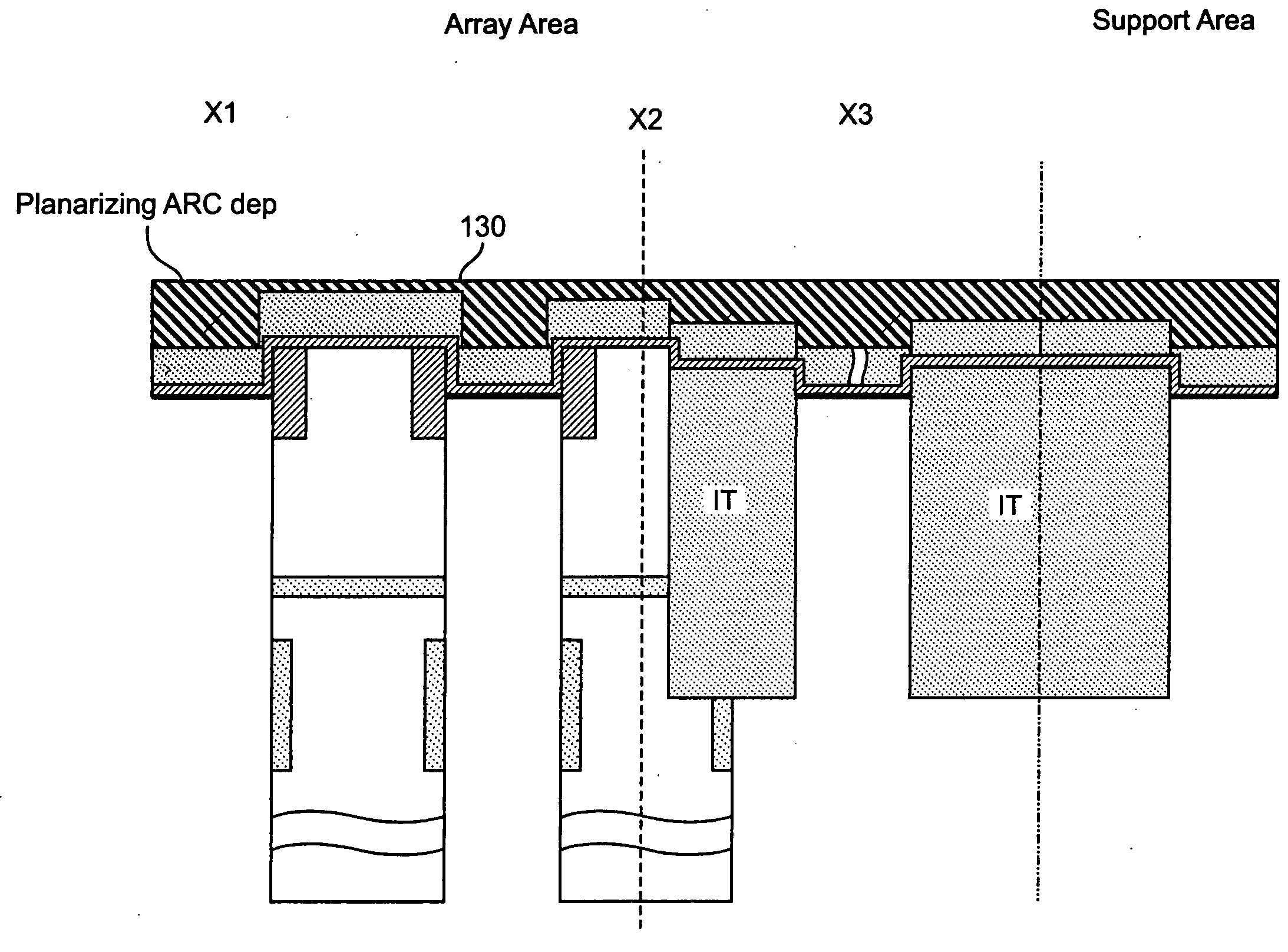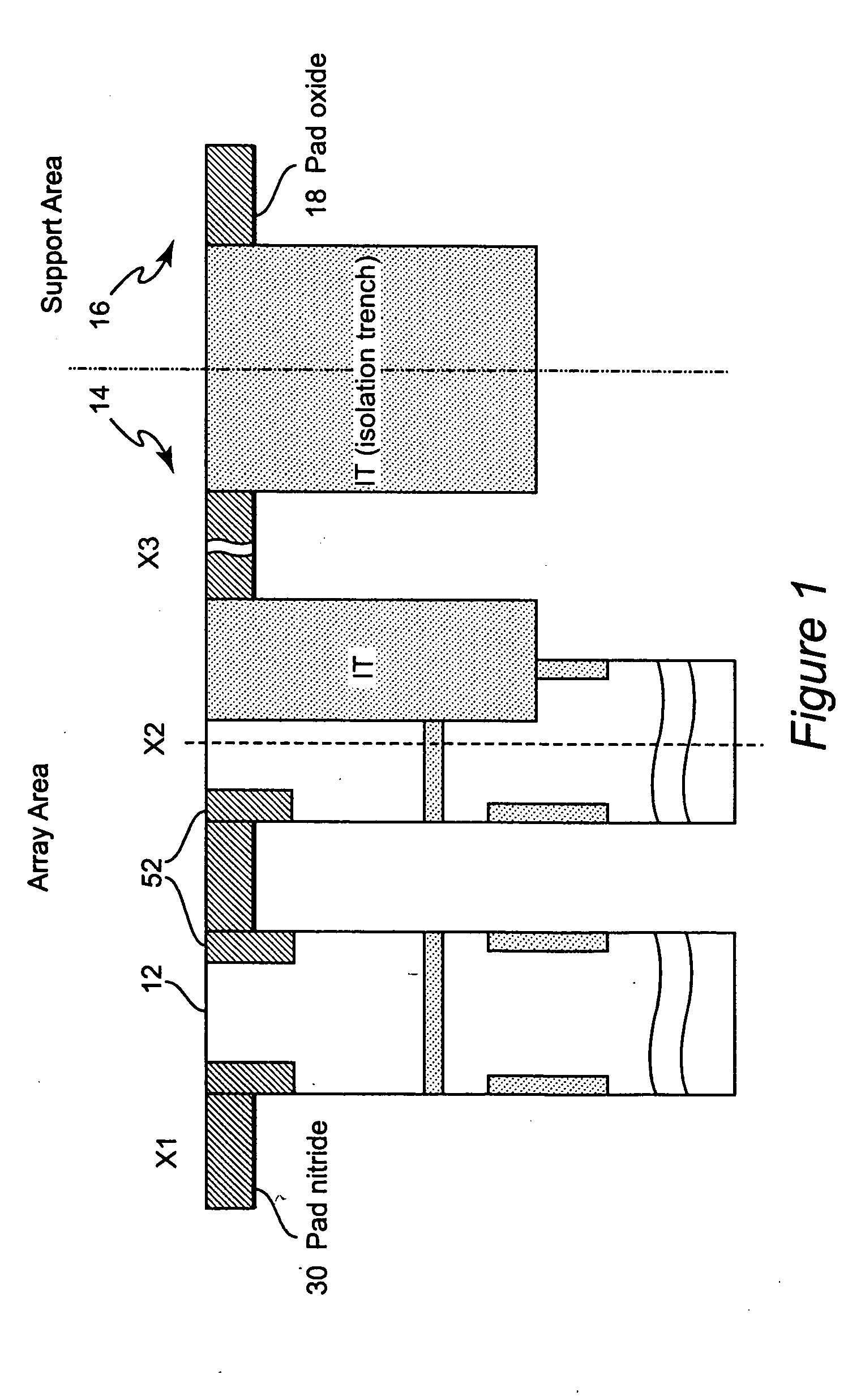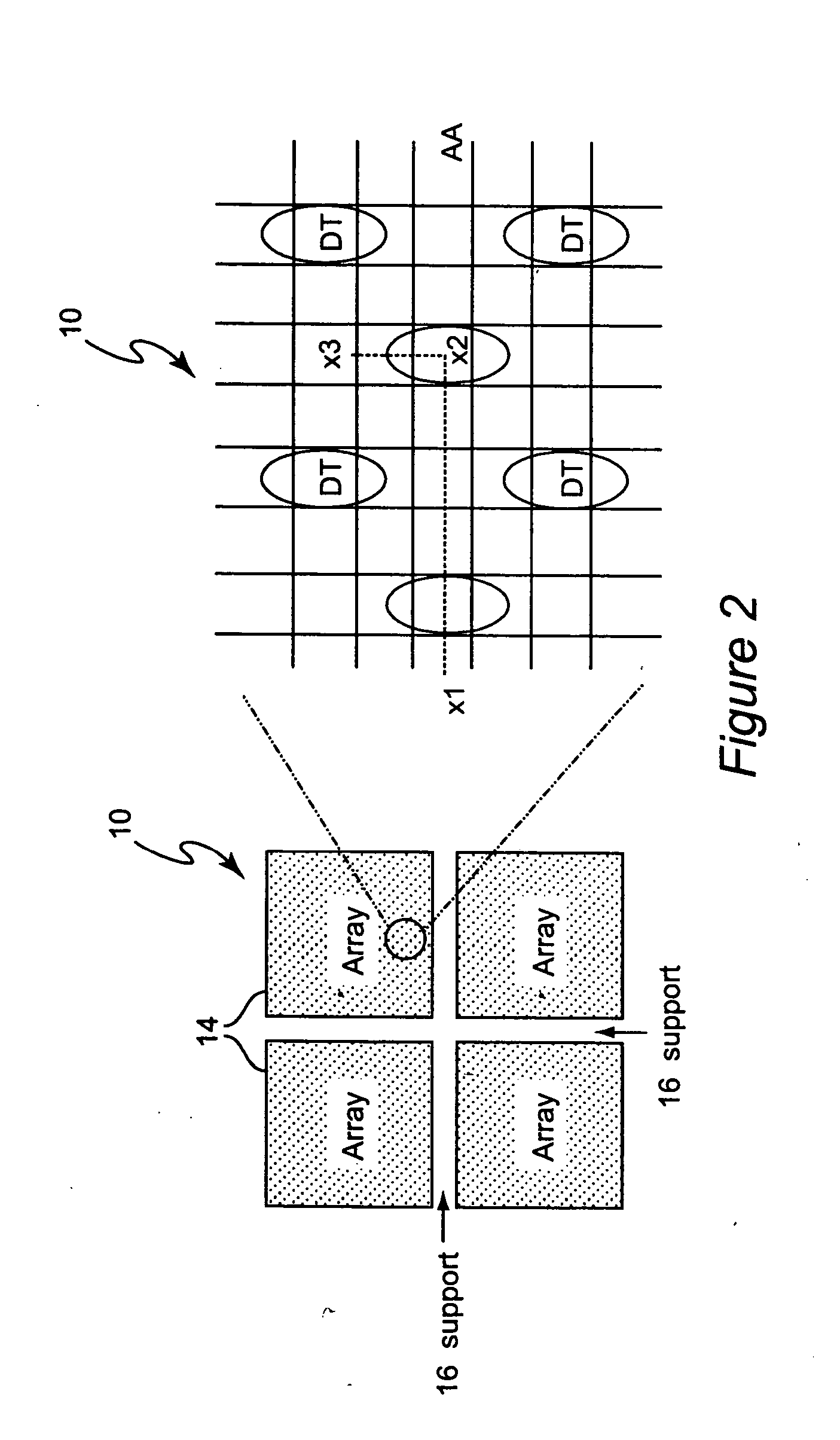Top-oxide-early process and array top oxide planarization
a top oxide and early process technology, applied in the field of manufacturing integrated circuits, can solve the problems of affecting the quality of integrated circuits, scratching of artifacts, etc., and achieves the effects of improving the quality and manufacturing yield of integrated circuits, enhancing manufacturing yield, and improving protection
- Summary
- Abstract
- Description
- Claims
- Application Information
AI Technical Summary
Benefits of technology
Problems solved by technology
Method used
Image
Examples
first embodiment
[0026] Referring now to FIGS. 3-7 application of the invention to the exemplary chip structure of FIGS. 1 and 2 in accordance with the invention will be discussed. FIG. 3 shows substantially the same chip cross-section shown in FIG. 1 except that a deglazing step has been performed which recesses isolation trench structures (IT) 32 at the top surfaces thereof below the level of the memory cell 12 studs and the pad nitride 30. Such a deglazing step prior to deposition of an oxide and nitride hard mask is desirable to control the step height of the array and support areas and, as such, constitutes a significant improvement over known TOE schemes. This deglaze sets the isolation trench (IT) heights in the array and support areas independently of subsequent array top oxide (ATO) processes and facilitates ATO planarization since the amount of materials to be removed is reduced. Additionally, an optional (isotropic) nitride liner 34 and an (isotropic) oxide hard mask 36 have been applied....
second embodiment
[0030] Referring now to FIG. 6, the ATO is planarized to or slightly into the ATO in active areas 55 such that the ATO is removed over the memory cells 12. As can be seen from a comparison with FIG. 5, the oxide hard mask is also removed from the support areas except where trench isolation structures were recessed in the deglazing process discussed above in regard to FIG. 3. Planarization can be performed by known CMP processes or by an ARC-assisted planarization process which will be discussed more fully in connection with the invention.
[0031] As shown in FIG. 7, a polysilicon hard mask layer 70 is deposited and a resist is applied and patterned to form a block-out mask 72. The polysilicon layer is then patterned in accordance with the block-out mask 72 to form a hard mask in the array area. Then, as shown in FIG. 8, the remaining oxide hard mask and support nitride liner in the support area are etched. The isolation trench oxide can also be etched to a desired height in the same p...
third embodiment
[0048] Accordingly, the invention simultaneously avoids the engendering of defects of the picture frame and foreign material contamination types since deep etches are avoided while reliably removing planarization materials and avoiding damage to structures while achieving improved uniformity of planarity within a tolerance of under 15 nm in order to support high lithographic resolution for connection formation, bit line contact formation and other BEOL processes and which are particularly critical in the preferred environment of chips having both array and support areas, such as large capacity memories and logic processors having embedded memories.
[0049] The third embodiment of the invention features not only increased control over height of structures in the array and support areas by deglazing as discussed above in connection with FIG. 3 but adjusting the average height / step height of the structures to be substantially the same so that planarizing materials can adequately fill reg...
PUM
 Login to View More
Login to View More Abstract
Description
Claims
Application Information
 Login to View More
Login to View More - R&D
- Intellectual Property
- Life Sciences
- Materials
- Tech Scout
- Unparalleled Data Quality
- Higher Quality Content
- 60% Fewer Hallucinations
Browse by: Latest US Patents, China's latest patents, Technical Efficacy Thesaurus, Application Domain, Technology Topic, Popular Technical Reports.
© 2025 PatSnap. All rights reserved.Legal|Privacy policy|Modern Slavery Act Transparency Statement|Sitemap|About US| Contact US: help@patsnap.com



